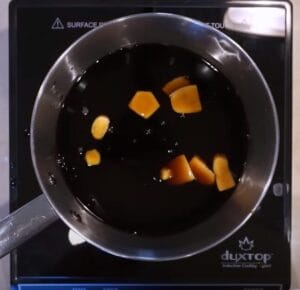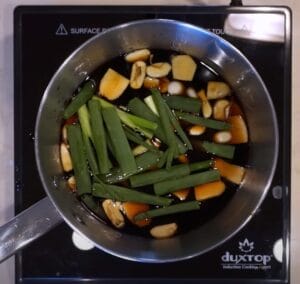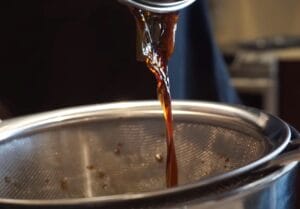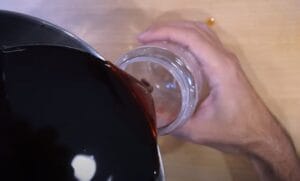As a food blogger at Food And Meal, I’m always eager to dive deeper into global cuisines to discover new flavor profiles. During a recent exploration of Japanese cooking, I came across an intriguing sauce called Shoyu Tare – a sweet and salty condiment made from soy sauce, mirin, and dashi.
Intrigued by its potential to add complex umami flavors to dishes, my mind raced with recipe ideas to experiment with. Visions of glistening tare-glazed meats and rich, glossy ramen broths came to mind, reminding me of the incredible depth of flavor Japanese food offers.
I carefully gathered a few simple ingredients and began reducing them together into a syrupy glaze. Soon my kitchen filled with an enticing aroma that promised something special. When cooled, I dipped a spoon to taste – an explosion of sweet and salty blended with subtle savory undertones unfolded on my palate! My tastebuds danced with delight.
I can’t wait for you to try this wonderful Shoyu Tare yourself. With just a small amount stirred into stir-fries, salad dressings, or noodle broths, it adds the most magical burst of flavor. Stay tuned to Food And Meal as I experiment with even more umami-packed recipes using this sauce! For now, my teriyaki chicken skewers await their sweet tare glaze…
Shoyu Tare Recipes

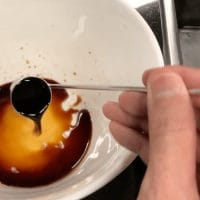
Shoyu Tare - Soy Sauce Seasoning
Equipment
Ingredients
- 1 ounce dried fish anchovy, bonito, or sardine
- 1 ounce dried shiitake mushroom about 1 ounce
- 1¾ cups water
- 2 ounces konbu
- Salt 17% by weight or ⅓ cup plus 1 teaspoon
- 2 cups dark soy sauce
Instructions
- Use a spice grinder to grind the dried fish and dried shiitake mushroom into a powder.

- Put the water in a large stockpot and add the konbu. Bring it to a boil. Simmer for 2 minutes, then remove and discard the konbu.

- Add the fish-and-mushroom powder to the simmering water and bring it to a boil again. When it boils, remove from the heat and strain the liquid through a paper or cloth filter (a coffee filter works well for this).

- If measuring the salt by weight, measure the weight of the liquid using a kitchen scale. Add 17% of this weight in salt (see here).
- Alternatively, measure out exactly 2 cups of the liquid and add ⅓ cup plus 1 teaspoon of salt. You will discard some of the liquid you made and thus have less tare in the end. (Again, it’s best to use the weight measurement.)

- Mix the salt in well.
- Pour the liquid-and-salt mixture into a measuring cup, then transfer to a large bowl. Measure out the same amount of soy sauce and add it to the bowl. Mix well.
- The tare will keep in an airtight container in the refrigerator for a few months.

Video
Notes
Nutrition
© Food And Meal
This website provides approximate nutrition information for convenience and as a courtesy only. Nutrition data is gathered primarily from the Spoonacular Database, whenever available, or otherwise other online calculators.
Alternative Method: Making Shoyu Tare in a Slow Cooker
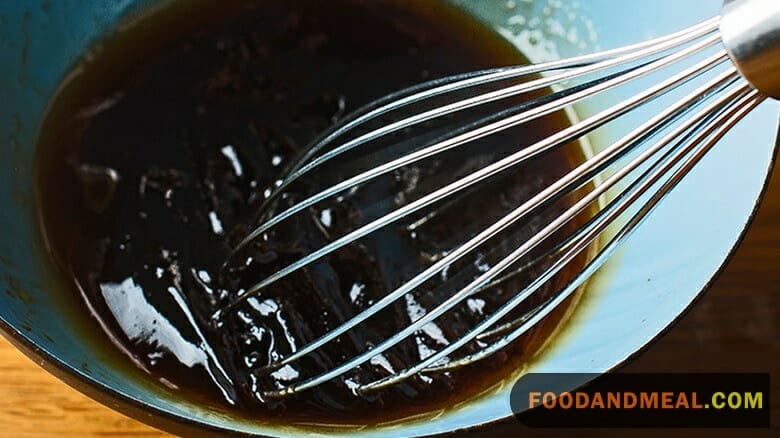
In your slow cooker, blend soy sauce, sake, mirin, and water, stirring for an even mix. Add bonito flakes (katsuobushi) and kombu seaweed for a distinctive umami flavor. Set the slow cooker to the lowest temperature or “Keep Warm” for a gentle simmer over 6-8 hours. Stir occasionally for even flavors. Add brown sugar 30 minutes before completion to balance savory notes. Adjust sweetness or saltiness to taste. Strain through a fine-mesh sieve or cheesecloth for a smooth sauce. Once cooled, transfer Shoyu Tare to a sterilized glass container and store in the refrigerator.
Tips for making Shoyu Tare
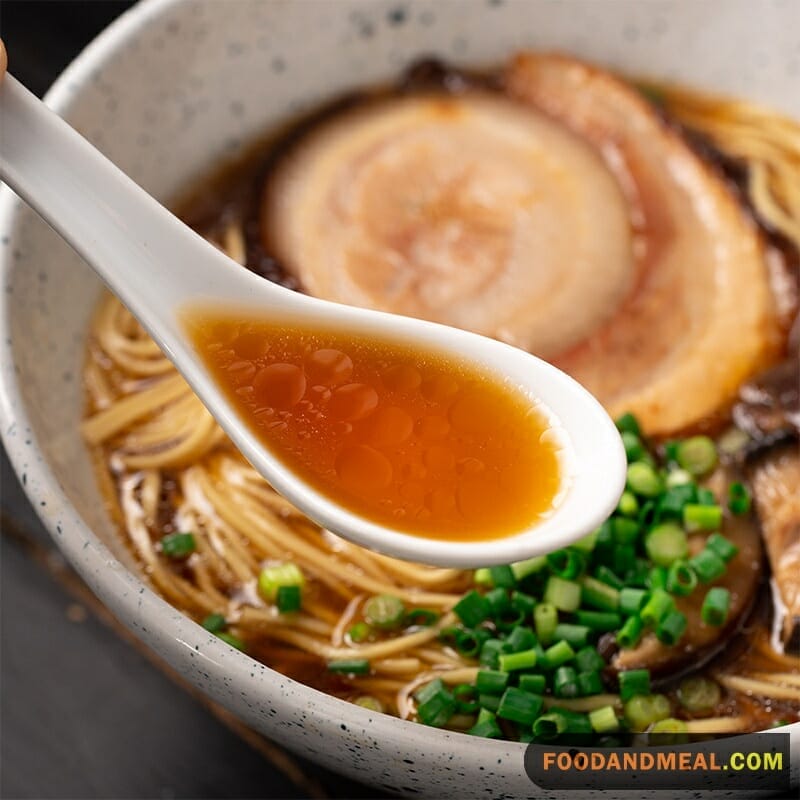
Cooking Tips
One key component I discovered was Shoyu Tare sauce – the salty-sweet base that provides rich umami in so many recipes. However, as a novice, I definitely made my share of mistakes when first attempting to make it myself!
I fondly remember my initial over-eager batch, when I carelessly let the sauce reduce too far. My impatience resulted in a syrupy, intensely salty glaze that overpowered every dish I tried it on. As I sadly stared at my inedible chicken teriyaki, I realized I needed to embrace patience when dealing with such a powerful ingredient.
My second attempt came after more careful research on proper Shoyu Tare techniques. I slowly simmered the mirin, sake, and soy, gently reducing until the liquid took on an enticing amber color. This batch rewarded me with a well-balanced sweet and salty sauce that elevated the flavors of everything it touched. Drizzled over fish or chicken, it created a rich, savory glaze. Even dashed into a simple vegetable stir-fry, it added the magical umami depth I had been seeking!
Serving Suggestions
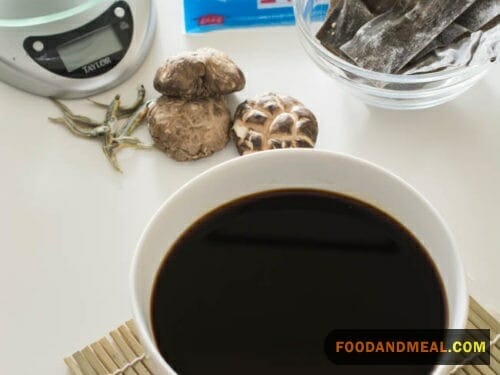
The sweet and salty Shoyu Tare sauce would pair nicely with a variety of lighter Asian-inspired dishes. Drizzle a bit over refreshing Daikon Salad, Scallion Salad, or Shrimp Tempura for a burst of flavor. The umami-rich sauce also complements the clean, fresh taste of Sashimi beautifully.
For heartier recipes, use Shoyu Tare to glaze Karaage Chicken, Orange Chicken or Beef Stir Fry. Brush on the tare during the last few minutes of cooking to create a richly lacquered exterior. Served with Yakisoba Noodles or Persian Rice, it makes a tasty weeknight dinner.
You could even incorporate Shoyu Tare into fusion dishes like Taco Pizza or Fish Tacos for an unexpected Japanese twist. Add to marinades, dipping sauces, or vinaigrettes to instantly punch up everyday recipes.
Frequently Asked Questions about Shoyu Tare
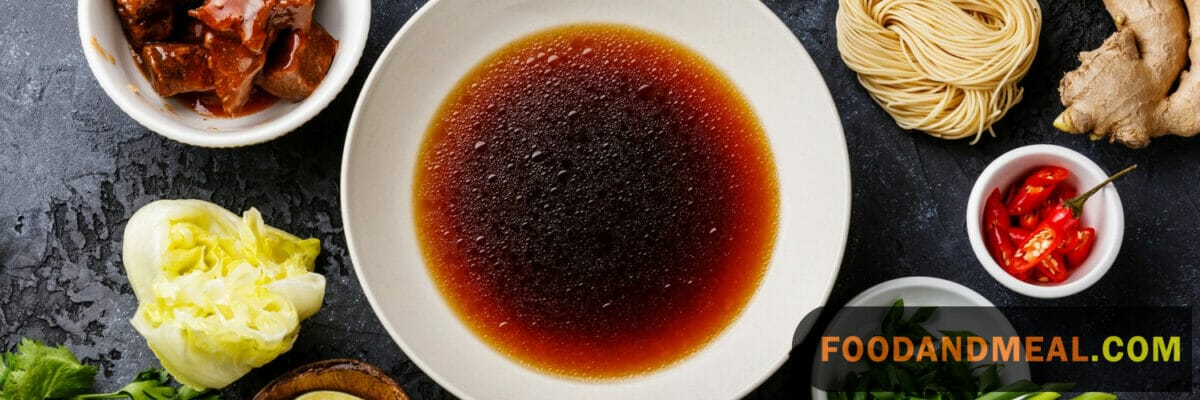
- What is Shoyu Tare? Shoyu Tare is a Japanese soy-based sauce used as a seasoning base in various dishes, especially in ramen. It typically consists of soy sauce, sake, mirin, and other flavor-enhancing ingredients.
- What does Tare sauce taste like? Tare sauce has a savory, umami-rich flavor with a slightly sweet and salty profile. It serves to enhance the overall taste of the dish it is added to.
- What is the difference between Shoyu Tare and Shio Tare? Shoyu Tare uses soy sauce as a base, providing a savory and slightly sweet flavor. In contrast, Shio Tare uses salt as a base, offering a saltier profile. Both are versatile seasoning bases in Japanese cuisine.
- What is a substitute for Shoyu Tare? A suitable substitute for Shoyu Tare is a mixture of soy sauce, sake, mirin, and a touch of sugar. Adjust the ratios to mimic the flavor profile of Shoyu Tare.
- How long does homemade Shoyu Tare last, and how should I store it? Homemade Shoyu Tare can last for several months when stored in an airtight container in the refrigerator. Keep it away from direct sunlight and extreme temperatures.
- How long does homemade Shoyu Tare last, and how should I store it? Homemade Shoyu Tare can last for several months when stored in an airtight container in the refrigerator. Be sure to keep it away from direct sunlight and temperature extremes.
- Can I use Shoyu Tare as a substitute for regular soy sauce?Absolutely! Shoyu Tare can be used as a flavor-packed substitute for regular soy sauce in a wide range of dishes. Just be mindful of its slightly sweeter and saltier profile.
- Can I freeze Shoyu Tare for long-term storage? Yes, you can freeze Shoyu Tare for extended storage. Divide it into smaller portions, place them in airtight containers, and freeze. Thaw only what you need to maintain its quality.
- Is Shoyu Tare gluten-free? Traditional Shoyu Tare contains soy sauce, which typically contains wheat. If you require a gluten-free version, look for gluten-free soy sauce or tamari to make your Shoyu Tare.
- Can I adjust the sweetness and saltiness of Shoyu Tare to suit my taste? Certainly! The beauty of making Shoyu Tare at home is that you can tailor it to your preferences. Taste as you go and adjust the sweetness and saltiness to achieve the flavor you desire.
I hope you’ll take the time to make your own batch of this versatile Shoyu Tare sauce. As I learned firsthand, a little patience and care goes a long way towards creating an incredible flavor enhancer for all types of dishes.
Be sure to visit Food And Meal at foodandmeal.com for the full, step-by-step recipe along with more inspirations for Japanese home cooking. Let us know how your Shio Tare turns out by leaving a comment below or tagging @foodandmeal on social media.
Happy cooking! I’ll be putting my latest batch of sauce to good use in a hot pot this weekend.
Hello! I’m Black Pie, your culinary guide at Food And Meal, Hana Hotel Travel Company Limited. I'm passionate about unveiling the rich and diverse flavors of African cuisine to the world. Each recipe we explore is a celebration of culture, tradition, and exquisite taste. Join me on this delightful culinary journey, where we'll discover and share the hidden gems of African cooking together!



